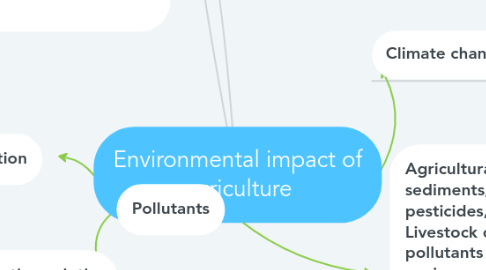Environmental impact of agriculture
by ANDRES BRYHAM ALEJANDRO DIAZ OBANDO

1. the environmental impact depends on the production practices of the system used by farmers. The connection between emissions to the environment and the agricultural system is indirect, since it also depends on other climatic variables such as rainfall and temperature. Some other factors may include the types of machinery used for agricultural purposes, as well as the farmer's choice of how to handle his livestock.
2. The environmental impact of agriculture involves a variety of factors, from soil to water, air, variety of animals and soils, people, plants, and the food itself. Some of the environmental problems related to agriculture are climate change, deforestation, dead zones, genetic engineering, irrigation problems, pollutants, soil degradation and waste
3. Deforestation
4. One of the causes of deforestation is the clearing of land for pasture or crops Deforestation causes habitat loss for millions of species and is also a driver of climate change
5. When trees are removed from forests, soils tend to dry out because there is no longer shade and there are not enough trees to assist in the water cycle by returning water vapor to the environment.
6. Pollutants
7. Pesticides can seep through the soil and enter groundwater, as well as remain in food products and cause the death of humans and wildlife.
8. Climate change
9. Assessing the effects of global climate changes on agriculture could help to anticipate and adequately adapt agriculture to maximize agricultural production. Although the net impact of climate change on agricultural production is uncertain, it is likely to change the growing areas suitable for individual crops
10. Most of the methane emissions result from the use of livestock, particularly ruminants such as cattle and pigs. Other livestock such as poultry, fish, ... have a much lower impact. Some solutions are being developed to counteract emissions from ruminants
11. Agricultural pollutants include sediments, nutrients, pathogens, pesticides, metals, and salts. Livestock can also cause pollutants to enter the environment. Bacteria and pathogens in manure can get into streams and groundwater if grazing, storing manure in ponds, and applying manure to fields are not properly managed


